Introduction
The Atlantic Ocean is the second-largest ocean on Earth. Spanning more than 41 million square miles, the ocean borders the Americas, Africa, Europe, and Antarctica. Throughout history, the Atlantic Ocean has played a pivotal role in transportation for explorers and routes for trade. In addition to its accessibility, the Atlantic Ocean houses many fascinating creatures to study and learn about. The massive size of the ocean provides different currents and temperatures for all sorts of animals to live happily in. While the ocean covers a large portion of the globe, it is also incredibly deep. The depths of the Atlantic Ocean hold fascinating discoveries and rare creatures that are still being discovered. Keep reading to learn more about what lives at the bottom of the Atlantic Ocean!

How Deep is the Atlantic Ocean?
The average depth of the Atlantic Ocean is 10,932 feet. That is more than two miles of water! While this is the average depth of the Atlantic Ocean, the ocean floor is not completely flat. Underneath the surface, many ridges, trenches, sandbars, and more vary the depth of the ocean. The deepest section of the Atlantic Ocean is the Puerto Rico Trench, with a depth of 28,232 feet. That is almost as many feet as Mount Everest! The Puerto Rico trench is located between Puerto Rico and the peninsula of Florida. Stretching 1,090 miles in length, the trench has many interesting features, including a mud volcano. The deepest part of the trench is called the Milwaukee Depth and is located 100 miles northwest of Puerto Rico.
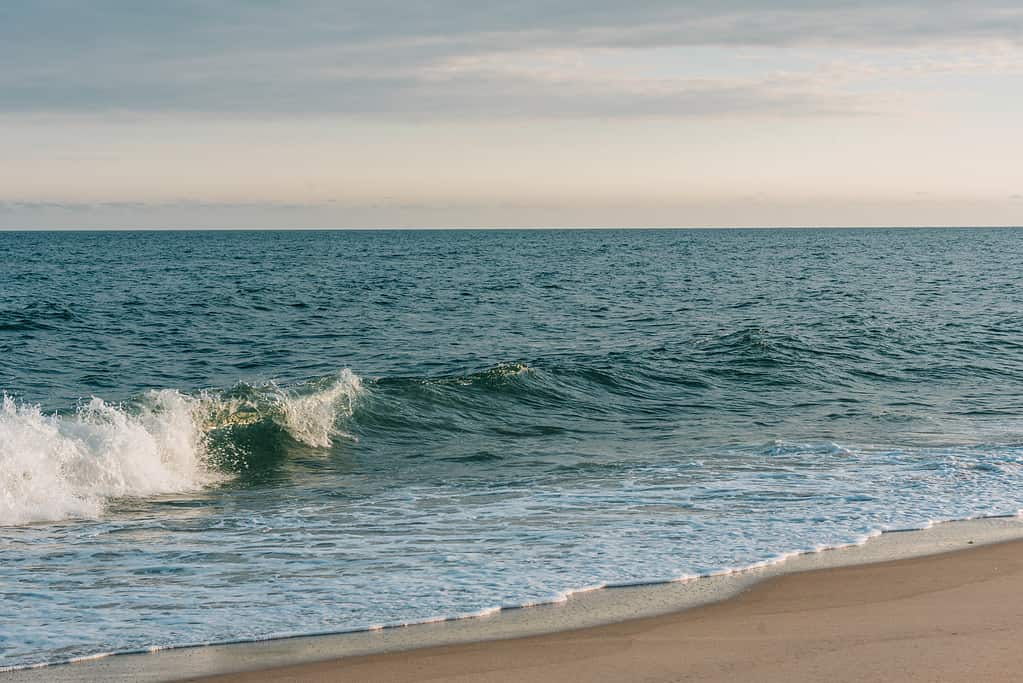
Underneath the surface, many ridges, trenches, sandbars, and more vary the depth of the Atlantic Ocean.
©Jon Bilous/Shutterstock.com
What Lives at the Bottom of the Atlantic Ocean
The bottom of the Atlantic Ocean is a place seldom visited by divers and submarines. Because the ocean is so deep, sunlight only reaches certain parts of the ocean floor, creating a world without light. Animals that live at the bottom of the Atlantic Ocean have fascinating traits that allow them to adapt to the irregular conditions of their environment. Here are some of the most interesting creatures found at the bottom of the Atlantic Ocean.
1. Anglerfish
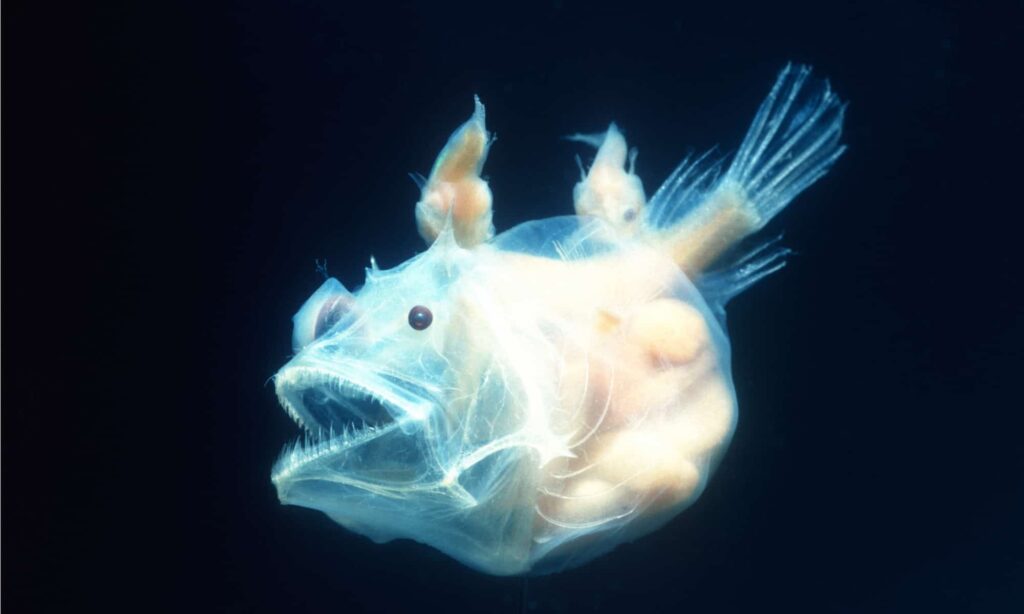
Anglerfish have mouths that reveal translucent fangs used to catch prey and defend themselves.
©Neil Bromhall/Shutterstock.com
More than 200 species of anglerfish live near the Atlantic Ocean floor. These fish have a dark grey or brown coloring and massive heads. Their mouths reveal translucent fangs used to catch prey and defend themselves. Anglerfish can be huge! Although most of these fish are similar in size to other species, anglerfish can weigh up to 110 pounds and measure three and a half feet in length. The most distinctive feature of these fish, however, is their lures. Female anglerfish have a dorsal spine that protrudes from their head. The tip of this spine is filled with live bacteria that produce their light. Because anglerfish are often found in the depths of the ocean where sunlight cannot reach, this feature is extremely helpful.
2. Goblin Shark
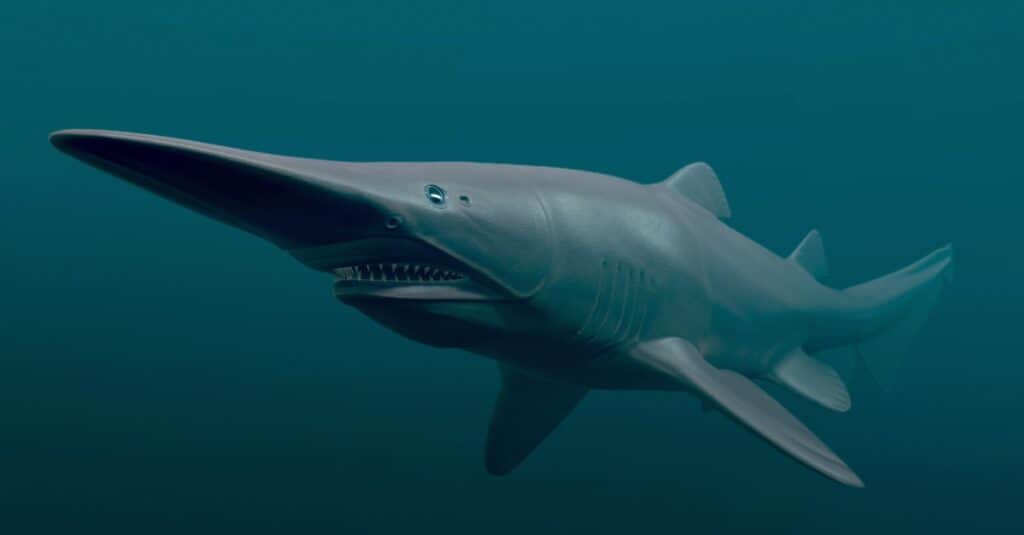
These creatures have long noses that extend far past their mouths, giving them the appearance of a goblin.
©iStock.com/3dsam79
Goblin sharks are very interesting-looking fish! These creatures have long noses that extend far past their mouths, giving them the appearance of a goblin. Goblin sharks usually have a pinkish hue, and can grow up to 12 feet in length! In addition to their incredible length, these fish often weigh almost 500 pounds, making them some of the largest predators in the depths of the Atlantic Ocean. One interesting feature of goblin sharks is their extendable jaws. These sharks have teeth that are attached to skin tissue inside their mouths. This tissue can stretch and extend, making it easier for a goblin shark to catch its prey.
3. Vampire Squid

Vampire squids are red or black depending on the region where they live.
©National Marine Sanctuaries, Public domain, via Wikimedia Commons – License
While the vampire squid has a scary-sounding name, these creatures do not feed on live animals. Vampire squids eat mainly decaying matter found on the ocean floor. To find food, the vampire squid relies on the bioluminescent light produced from the tips of its arms. If a predator bites off one of these limbs, vampire squids have the amazing ability to regrow them! To defend itself from predators, the vampire squid will eject a cloud of mucus to create a distraction and escape. These squids are red or black depending on the region where they live and are distinguishable by their massive clear eyes. They have the biggest eyes in proportion to their body in the entire animal kingdom! Vampire squids are fairly small, measuring up to a foot in length.
4. Frilled Shark
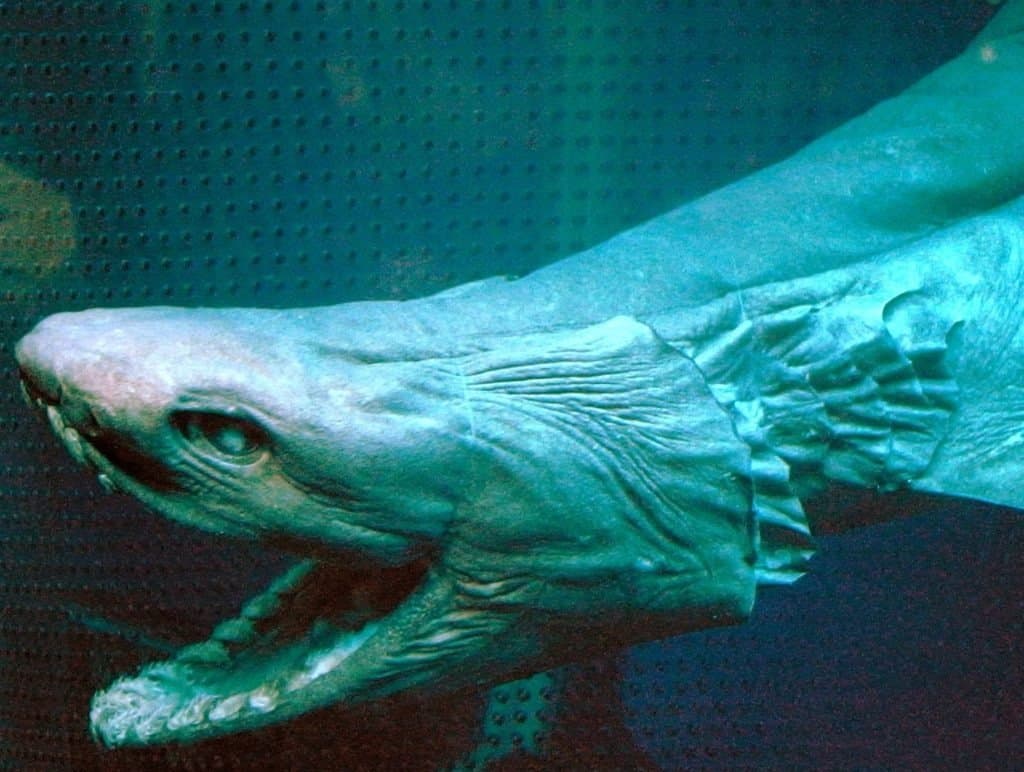
These sharks measure around four feet in length on average.
©OpenCage / CC BY-SA 2.5 – License
Frilled sharks are strange-looking creatures that differ greatly in appearance from most other species of shark. These fish have dark brown, grey, or black bodies that resemble eels. Frilled sharks measure around four feet in length on average, and weigh 200 pounds, making them much smaller than many other shark species. While frilled sharks have fewer rows of teeth than other species of sharks, their three-cusped fangs provide around a thousand hooks to latch onto prey. These sharks have one of the longest gestation periods in the entire animal kingdom, with most females carrying their young for around three and a half years.
5. Barreleye
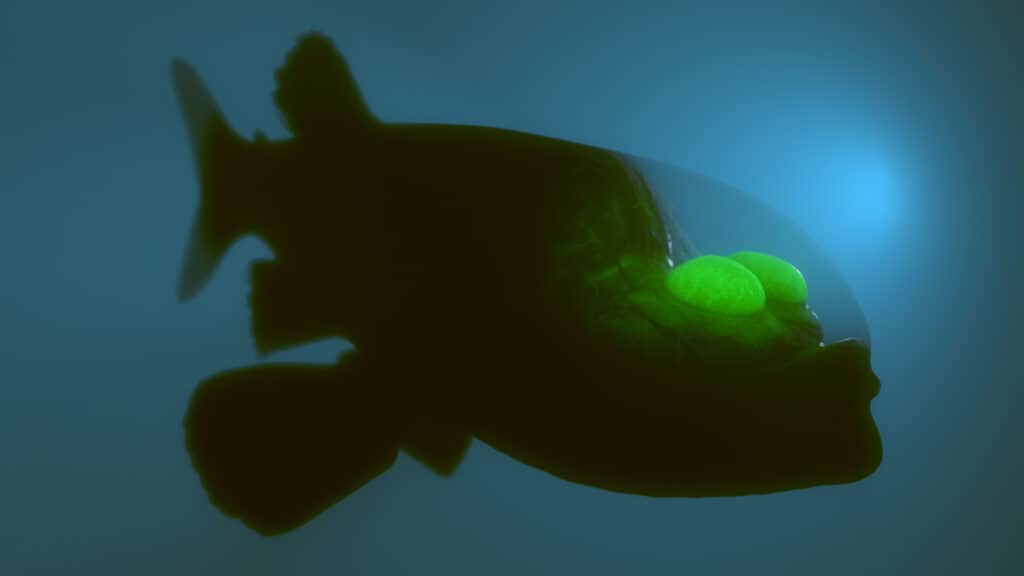
The front portion of a barreleye consists of a completely transparent dome.
©3DSam79/Shutterstock.com
Barreleyes are also known as “spook fish” due to their incredibly unique appearance. While the body of a barreleye makes it look like a normal fish, these creatures have extremely strange heads. The front portion of a barreleye consists of a completely transparent dome. Within this dome, two large, glowing green eyes can be seen. Because barreleyes live so far beneath the ocean’s surface, their eyes point upward. However, they can roll their eyes forward if needed. These fish measure around six inches in length and usually weigh between two to five ounces.
6. Slender Snipe Eel
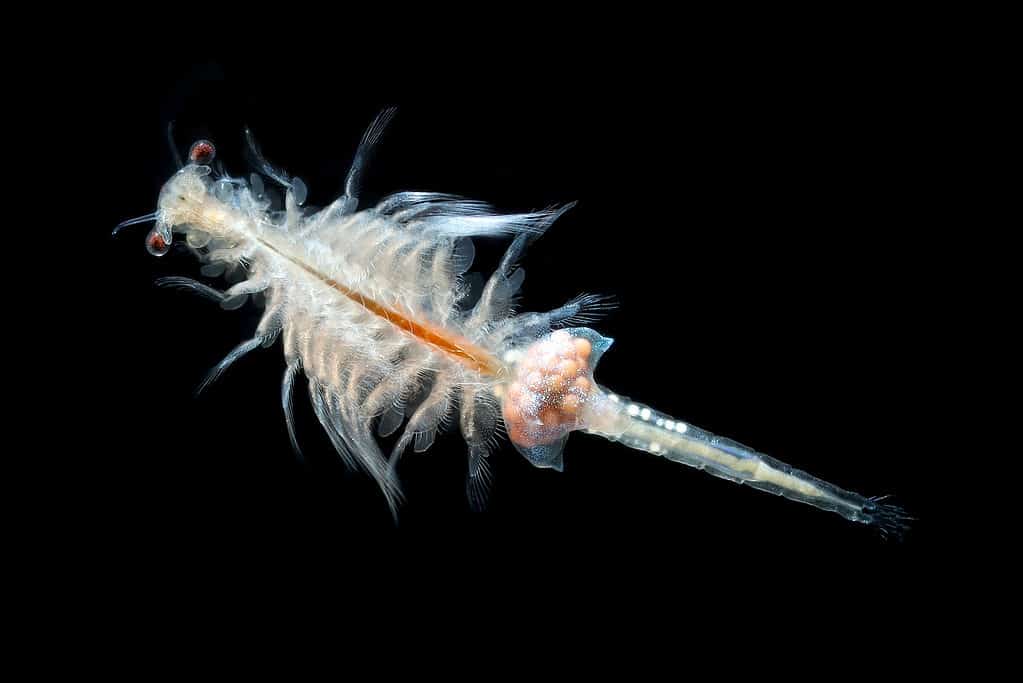
These rare eels eat mainly microscopic crustaceans.
©Dan Olsen/Shutterstock.com
Slender snipe eels can reach lengths of five feet, but only weigh a few ounces. These eels are so compact that their bodies are actually 75 times longer than they are wide! The slender snipe eel has two extremely long jaws that resemble a bird’s beak. These jaws are covered in teeth that grab onto prey while the eel swims. Slender snipe eels have bodies that are dark brown or grey, along with black fins. While these eels do not have any bioluminescent properties, they have large eyes that help them make out shapes and sense threats in the dark waters of the Atlantic.
Pollution in the Atlantic Ocean
While the Atlantic Ocean is a beautiful place home to many fascinating creatures, it is in trouble. In 2020, it was reported that more than ten times the amount of plastic estimated to be in the ocean was found there. Specifically, 200 million tons of common plastics are now thought to be floating in the Atlantic Ocean’s waters. When plastic waste is discarded into the ocean, it can be extremely harmful to the marine life underneath the surface. Many animals mistake plastic for food and can be significantly harmed and even die after eating it. Although plastic is dumped into the ocean at the surface, it eventually sinks to the deepest parts, harming the creatures that live at the bottom of the Atlantic Ocean.
Interesting Facts
- The Atlantic Ocean is thought to be the newest ocean on Earth. It was formed almost 150 million years ago during the breakup of Pangea.
- The world’s longest mountain range is underwater in the Atlantic Ocean. The Mid-Atlantic Ridge divides the Atlantic Ocean into two halves and measures over 40,000 miles in length.
- Most people know trees produce a majority of the world’s oxygen. However, they might be surprised to discover that the Atlantic Ocean is actually responsible for around 20 percent of the oxygen in the world. This is due to photosynthesis from marine plants and other microorganisms.
The photo featured at the top of this post is © Susann Guenther/Shutterstock.com
Thank you for reading! Have some feedback for us? Contact the AZ Animals editorial team.






